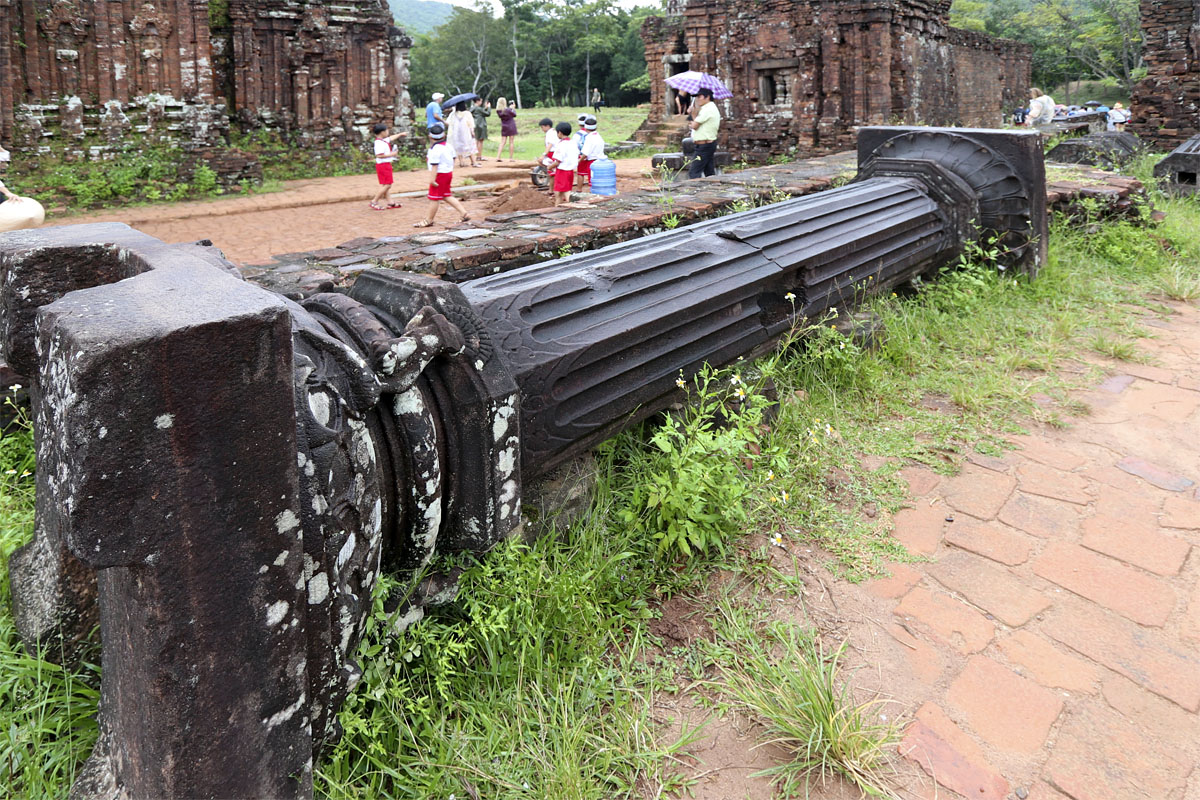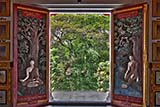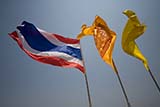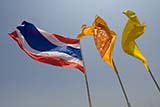Canon EF-S 10-22mm f/3.5-f/4.5 Lens Review
Video Review
You can watch my video review of this lens on YouTube at the following link:
Canon EF-S 10-22mm f/3.5-f/4.5 Lens Overview And Review
Product Images


Sample Images
A selection of photos taken in Thailand and Vietnam with the Canon EF-S 10-22mm f/3.5-f/4.5 lens.

Canon EF-S 10-22mm f/3.5-f/4.5 | Focal length 10mm | Canon EOS 40D | ISO: 400 | Aperture: f/3.5 | Shutter Speed: 1/50s

Canon EF-S 10-22mm f/3.5-f/4.5 | Focal length 10mm | Canon EOS M6 | Canon EF-EOS M Mount Adapter | ISO: 160 | Aperture: f/3.5 | Shutter Speed: 1/160s

Canon EF-S 10-22mm f/3.5-f/4.5 | Focal length 10mm | Canon EOS M6 | Canon EF-EOS M Mount Adapter | ISO: 100 | Aperture: f/9 | Shutter Speed: 1/200s

Canon EF-S 10-22mm f/3.5-f/4.5 | Focal length 10mm | Canon EOS M6 | Canon EF-EOS M Mount Adapter | ISO: 100 | Aperture: f/3.5 | Shutter Speed: 1/60s

Canon EF-S 10-22mm f/3.5-f/4.5 | Focal length 22mm | Canon EOS M6 | Canon EF-EOS M Mount Adapter | ISO: 320 | Aperture: f/4.5 | Shutter Speed: 1/250s

Canon EF-S 10-22mm f/3.5-f/4.5 | Focal length 10mm | Canon EOS M | Canon EF-EOS M Mount Adapter | ISO: 100 | Aperture: f/10 | Shutter Speed: 1/250s

Canon EF-S 10-22mm f/3.5-f/4.5 | Focal length 10mm | Canon EOS 40D | ISO: 100 | Aperture: f/8 | Shutter Speed: 1/320s

Canon EF-S 10-22mm f/3.5-f/4.5 | Focal length 16mm | Canon EOS 40D | ISO: 200 | Aperture: f/4 | Shutter Speed: 1/1250s

Canon EF-S 10-22mm f/3.5-f/4.5 | Focal length 22mm | Canon EOS 40D | ISO: 200 | Aperture: f/8 | Shutter Speed: 1/800s

Canon EF-S 10-22mm f/3.5-f/4.5 | Focal length 10mm | Canon EOS 40D | ISO: 200 | Aperture: f/3.5 | Shutter Speed: 1/800s

Canon EF-S 10-22mm f/3.5-f/4.5 | Focal length 20mm | Canon EOS 40D | ISO: 200 | Aperture: f/8 | Shutter Speed: 1/125s
User Impressions
After I moved from the Canon FD manual focus system to EOS I made myself some rules regarding lens investments. No Canon EF-S Lenses; no non-L lenses; no zoom lenses with a variable maximum aperture throughout the zoom range, no lenses without IS.
This lens purchase broke all my rules.
The Canon 10-22mm is the cheapest way anyone with a 1.6x crop can get Ultra Wide Angle (UWA) shots. The alternative is a full-frame body and an EF 16-35mm lens, but that option costs considerably more.
At one stage it wasn't clear how committed Canon were to the APS-C size sensor. Would full-frame eventually take over the whole product line, thus making Canon EF-S Lenses obsolete? However, the announcement of the 7D seems to imply APS-C will remain part of the Canon lineup.
This lens, like all Canon EF-S Lenses, isn't an L. There is no red ring, no additional goodies in the box, no weatherproofing, and it isn't quite as substantial as my other lenses. But the glass used inside implies that image quality hasn't been skimped on.
Reviews indicate that the lens performs very well with regard to distortion, sharpness and chromatic aberration, etc. I'm really more concerned about whether it takes photos that are pleasing to my eye, or not.
This is the widest lens I have ever owned. Back in my FD days, my widest lens was an FD 28mm f/2.8. Since moving to EOS the widest view with my Canon EF 17-40mm f/4L on a crop body is roughly the same.
Performance
My opinion is that image quality is excellent in terms of sharpness, colour rendition and saturation. I have no complaints in that area. The best thing to do is to look at sample images.
Autofocus speed is perfectly adequate. I don't imagine that people will use this lens much for moving subjects. I have not experienced any AF problems.
Filters
 I always buy a clear filter to protect the front element of my lenses.
I always buy a clear filter to protect the front element of my lenses.
With this lens I was worried about vignetting at the widest zoom setting so bought the thinnest filter I could find - a Pro1 Digital made by Hoya. I can't detect any signs of vignetting caused by the filter.
The filter size is 77mm, the same as my Canon EF 17-40mm f/4L, and I have a circular polarising filter that size already. It's quite thick and therefore I thought it would cause vignetting problems.
However, it is not advisable to use a polarising filter with UWA lenses so I have avoided using it.
Hood
Not being an L lens, the lens comes without a hood. The hood happens to be the same one that came with my 17-40mm f/4 L so I cane use that if I wish, but I have found use of a hood to be unnecessary.
Composition
This is quite tough. When painting you start off with a blank canvas and add things. With photography, your canvas is already fall and it is up to you to exclude things in your composition.
The problem with the 10-22mm is that so much is included it is difficult not to exclude things. If you make big crops in post-processing, then you may as well not bother with an ultrawide lens.
Short and mid-range telephoto lenses are relatively easy to use. To use this lens as it really should be used isn't always easy.
Vignetting
In certain conditions (it seems to be in fairly bright scenes), vignetting can be quite noticeable with this lens. Considering the enormous field of view, I guess this is to be expected.
I only shoot RAW, and correct in post-processing. Adobe Camera Raw (ACR) has a vignetting correction control, as does Canon's Digital Photo Professional (I'm currently using version 3.8.0.0) where it is referred to as Peripheral Illumination. These both seem to do a fairly good job.
I know that with some cameras, lens imperfections are corrected in-camera during the RAW to JPG conversion if you shoot JPG.
Canon 10-22 F3.5/f/4.5 vignetting problems.
Clicking on the thumbnail images will open a larger image in a pop-up window.
ISO: 400
Aperture: f/3.5
Shutter speed: 1/50
Focal length: 10mm
EC +/-: 0
Monopod/Tripod: No
Flash: No
Location: Bangkok, Thailand
Vignetting correction: No
File Size: 116 KB
ISO: 200
Aperture: F6.6
Shutter speed: 1/1000
Focal length: 10mm
EC +/-: 0
Monopod/Tripod: No
Flash: No
Location: Bangkok, Thailand
Vignetting correction: ACR
File Size: 119 KB
Use
If you are used to using lenses of a more conventional focal length, it is really strange the first time you use an Ultra Wide Lens.
When you look at a scene before you frame it, you think that you won't get everything in. However, when you look through the viewfinder you find that not only is everything in but there is wasted space at the sides.
To get rid of the wasted space you move closer to the subject but then you realise that you are almost touching the foreground subject with the front of the lens.
You can get extremely close to a foreground subject but still gets lots of background in due to the extreme wide angle and the almost infinite depth of field. Bokeh isn't something you worry about too much with this lens because you don't see a lot out of focus.
As a walkaround lens I often find the 10-22mm too wide. I like street photography and with this lens it is necessary to get very, very close. If the foreground subject is an inanimate object it is OK, but if your subject is a person it can start to get a little uncomfortable.
My ideal walkaround lens would be a 17-200mm high quality, compact, fixed maximum aperture, 'L' class lens but Canon doesn't make one. For that reason I normally use two lenses already for walkaround photography: Canon EF 17-40mm f/4L and Canon EF 70-200mm f/4L.
Now, there are lots of times I would like to use the 10-22mm for a certain shot but I don't wish to carry around three lenses. And there lies the problem. It's a specialised lens but unlike a long telephoto, which you know you will need before you go out shooting for the day, it may not always be obvious when I will need this lens. Time will tell.
Sometimes with other lenses you can't get back far enough to get everything in. That's not often the case with the 10-22mm and in certain situations the ability to get everything in can be very useful.
However, if you stand back and just use the 10-22mm to 'get everything in' the resulting images can often appear boring because everything is so small.
The lens works best when you use its unique perspective and almost infinite depth of field but, as I said above, effective composition can be tough.
HDR
 With such a large field of view it is more likely when using UWA lenses that different parts of the scene will have very different light levels.
With such a large field of view it is more likely when using UWA lenses that different parts of the scene will have very different light levels.
If the dynamic range in the scene exceeds that of the sensor then some shadows will be very dark or some highlights will be completely blown out depending on your exposure settings.
Apart from trying to correct the differences at the time of exposure with Graduated Neutral Density (GND) filters, there isn't much you can do while shooting.
Alternatively, you can make several different exposures of the same scene and then merge them together using specialised software in post-processing.
I still can't make up my mind whether I like HDR or not. If you like it, then this lens lends itself very well to scenes that are suitable for HDR post-processing.
Annoyances
To use as a general purpose walkaround lens, I normally use this lens or my Canon EF 17-40mm f/4L. The Canon EF-S 10-22mm has its zoom ring at the front of the lens, and its focusing ring at the rear.
You've guessed it. The Canon EF 17-40mm f/4L lens has its zoom ring at the rear of the lens, and its focusing ring at the front. Well done, Canon.
When I get it wrong I realise immediately but it's slightly annoying.
Another small annoyance with the 10-22mm is that it is the only lens I own where I find the AF/MF switch gets flicked accidentally. I very rarely use manual focus but I often find the switch in the MF position.
A piece of tape might help. Of course, with such a huge depth of field focusing doesn't tend to be that critical anyway. When I have taken shots with focusing unintentionally set to manual, the results have been acceptable.
Would I Buy One Now?
Yes. When I bought the Canon EF-M 11-22mm IS, which was released in 2013, I expected it to be better (or at least as good) as the EF-S 10-22mm (released in 2004) because of better lens coatings and a more modern design.
However, when I compared images from the two lenses I found the opposite to be true. The EF-S 10-22mm is now getting a little long in the tooth, but it is still an excellent lens in respect of colour saturation, contrast and sharpness.
The EF-M 11-22mm is a fine lens, it is smaller, lighter, and it has IS. However, in terms of pure image quality I prefer the EF-S 10-22mm.
Post-Processing
Original images were shot in the RAW format and converted with Adobe Camera Raw. Noise was reduced using Imagenomic Noiseware Professional. Small amounts of image enhancement were applied using Adobe Photoshop CS2 (curves, levels, saturation) before sharpening using the Smart Sharpen filter (Amount: 30% - 120%, Radius: 0.2px - 0.3px, Remove: Lens Blur).
The large JPG images that open if you click on a thumbnail were saved with a 'High' quality setting of '8' on a scale of 0-12.
Lens Details
Weight: 13.6oz; 385g
Filter Diameter: 77mm
Closest Focusing Distance: 0.8ft; 0.24m
Minimum Aperture: f/22-f/29
Maximum Aperture: f/3.5-f/4.5
Autofocus: Ring-Type Ultrasonic Motor
Date Purchased: October 2009
Supplier: Chia Color Lab, Hat Yai, Thailand
Price: 26,400 Thai Baht
Lens Hood: EW-83E (not included)
Soft Case: LP1319 (not included)
Other Review Pages You May Be Interested In






